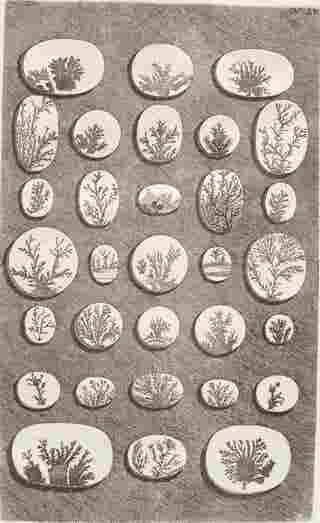Anna Maria Hussey
Born Anna Maria Reed in 1805, Mrs. T. J. Hussey was both illustrator and author of Illustrations of British Mycology. She was married to Thomas John Hussey, an amateur astronomer who, following in his father-in-law’s footsteps, became Rector of Hayes, Kent. Both Husseys had a family history of involvement in the sciences. Mrs. Hussey’s sister, Fanny Reed, was also an illustrator and Reverend Hussey’s relative, James Hussey, was a member of the Botanical Society. Rev. Hussey was a regular contributor to the Transactions of the Royal Astronomical Society and other publications and was the first to propose the existence of an 8th planet based on his observations of the motions of Uranus. After 1837, his contributions ceased and in 1839 he offered his Observatory for sale to Durham University. Her career as a mycological illustrator began in earnest in the 1840s. With three children to raise, the motive for both the sale of his instruments and her publishing activities was probably financial.
Hussey was a strong willed woman who approached her personal researches with an enthusiasm that she did not quite feel for her role as a clergyman’s wife. She resisted when she was called upon by “every old woman in the parish” and she chafed at her husband’s reminders of her duties. She was a prolific writer, the author of published fiction, as well as the extensive text that accompanied the plates in Illustrations of British Mycology. During her most creative period, she maintained an active and candid correspondence with her mycological mentor, Reverend M. J. Berkley, which provides many details of her daily life and work. In his lifetime, Berkeley described over 6,000 new species of fungi. He assisted Hussey with identifications and she supplied him with specimens. She was also acquainted with Charles Badham, a scholar of classical literature, and mycologist M. C. Cooke, who cites Hussey in his 1875 Fungi: Their Nature and Uses and called her “friend”.
Despite her moments of rebellion, she accepted the mainstream view towards women, nature and science, seeing herself as an educator, providing information for popular reading and speaking directly to mothers teaching their children. She gives the reader a glossary of terms and offers instruction on how to select the appropriate basket and other equipment for mushroom hunting and spore collection. Hussey was a specialist in Hymenomycetes, the species that includes agarics, puffballs, and morels. As was the custom for natural historians of both sexes, she recommends food uses for her subject when appropriate.
Illustrations of British Mycology was published in two series, dating from 1849 to 1855. Series 1 consisted of 90 plates and was published by subscription. Series 2 was issued in monthly numbers of 3 plates each. The plate shown here is one of the 140 plates from the final bound edition, which includes both series. Two mushroom genera have been named in her honor. The first, was called Husseia by Berkeley in 1847, prior to the publication of her book. The second was posthumously named Husseya by J. G. Agardh in 1901. (In 1958, to avoid confusion caused by the homonym, the latter was renamed Husseyella by George F. Papenfuss.) Hussey wished she could have illustrated her book with daguerrotypes, but fortunately she was constrained by cost to publish with the lithographic process. Her illustrations continue to be recognized today for their beauty and detail.

